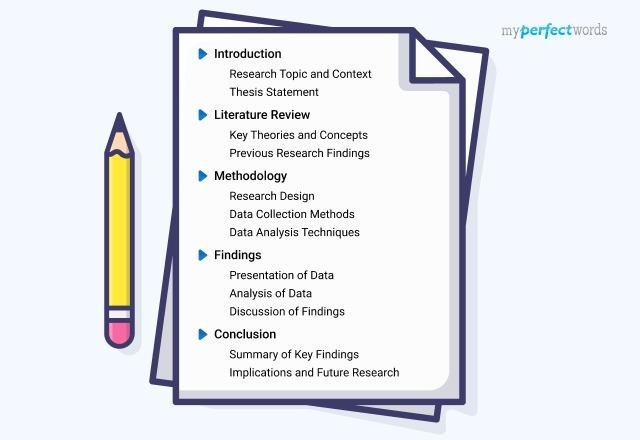research paper guidelines

In the vast landscape of academia, research papers serve as beacons of knowledge, illuminating the intricate paths of inquiry and discovery. Yet, navigating the nuances of academic writing can often feel like traversing a dense thicket, where each turn is fraught with potential missteps. To guide scholars—both seasoned and novice—through this complex terrain, a clear set of research paper guidelines is essential. These guidelines not only delineate the expectations of thorough, rigorous scholarship but also empower researchers to articulate their findings with clarity and precision. In this article, we will explore the fundamental principles that underpin effective research paper writing, offering insights that can transform your work into a compelling narrative of exploration and understanding. Join us as we unravel the essentials that can enhance your academic writing journey and contribute meaningfully to the collective quest for knowledge.
Understanding the Structure of a Research Paper
Every research paper follows a structured approach that not only facilitates the organization of thoughts but also enhances readability and understanding. Generally, these papers are designed like an hourglass, starting broadly in the introduction and progressively narrowing down to the specific thesis statement. This structure typically includes several key components: Introduction, where the research question is outlined; Methodology, detailing the research process; Results, presenting findings; and Discussion, interpreting results in the context of existing knowledge. By maintaining a logical flow throughout, researchers ensure that readers can easily navigate through the complexities of the subject matter.
Within the core sections of a research paper, clarity is paramount. Each paragraph should build upon the previous one, effectively guiding the reader toward the conclusion. Consider organizing content as follows: Context in the introduction captures readers’ interest; Content in the results section presents the data without bias; and Conclusion ties all findings back to the original research question, providing a recap of the discussed implications. A structured approach not only assists in conveying ideas efficiently but also reinforces the validity of the research conducted, ultimately contributing to the academic discourse in the field.

Essential Components for Effective Research Methodology
At the heart of a robust research project lies a well-defined methodology that guides every facet of the study. Essential components of this framework include research design, which dictates how data will be collected and analyzed, ensuring clarity and direction throughout the process. Furthermore, selecting appropriate data collection methods—be it qualitative, quantitative, or mixed methods—plays a crucial role in gathering meaningful information. Additionally, establishing a clear set of objectives and research questions serves as a compass, helping researchers remain focused while addressing the specific phenomena they aim to explore.
Another fundamental aspect is the sampling strategy that determines how participants are chosen, influencing the validity of results. It is equally important to outline the ethical considerations surrounding the research, such as informed consent and confidentiality, to uphold the integrity of the study. Lastly, the incorporation of a comprehensive data analysis plan is vital for translating raw data into insightful findings, reinforcing the overall credibility of the research outcomes. Each of these elements, woven together, forms a cohesive approach that enhances the effectiveness and reliability of the research methodology.

Citing Sources: A Guide to Academic Integrity
In the world of academic writing, maintaining integrity through proper citation is not merely a suggestion; it’s a vital requirement. Citing sources not only supports your arguments but also acknowledges the intellectual contributions of others. This practice involves detailing all relevant information about the referenced materials, ensuring that readers can verify and explore these sources further. Adopting a consistent citation style—be it APA, MLA, Chicago, or others—is crucial for presenting your work as credible and well-researched. Remember that failing to cite sources can lead to serious academic consequences, including accusations of plagiarism.
To streamline your citation process, consider the following tips: organize your references from the outset, maintain a record of all sources accessed, and utilize citation management tools, such as Zotero or EndNote. Additionally, embracing the principles of academic honesty will enhance your research skills as you engage with existing literature. Below is a simplified table showcasing popular citation styles and their key features:
| Style | Field of Study | Key Features |
|---|---|---|
| APA | Social Sciences | Author-date format; focus on date of publication |
| MLA | Humanities | Author-page number format; emphasis on authorship |
| Chicago | History | Footnotes and bibliography; flexibility in format |

Polishing Your Paper: The Importance of Revision and Feedback
Every great research paper goes through a transformative journey, where the magic of revision and constructive feedback plays a crucial role. Revision isn’t just about correcting typos or tweaking sentences; it’s an opportunity to refine your ideas and enhance clarity. By critically analyzing your own work, you can identify gaps in your arguments and ensure your evidence effectively supports your claims. Here are some key aspects to consider during the revision process:
- Structure: Reassess the organization of your paper. Does each section flow logically into the next?
- Clarity: Are your ideas expressed clearly? Vague or convoluted language can obscure important points.
- Evidence: Ensure that your statements are backed by strong, relevant evidence.
- Voice: Maintain a consistent academic tone throughout the paper.
Equally important is seeking feedback from peers or mentors. Fresh eyes can catch mistakes you might overlook and offer insights that elevate your work. During this phase, you may consider utilizing a feedback template to systematically gather thoughts and suggestions. Below is a simple table to help you organize and analyze the feedback received:
| Reviewer Name | Feedback Summary | Action Required |
|---|---|---|
| John Doe | Clarity issues in the introduction. | Reword introduction. |
| Jane Smith | Some sections lack sufficient evidence. | Add citations and examples. |
| Mary Johnson | Great flow, but could use stronger conclusions. | Revise conclusion for impact. |
To Conclude
understanding research paper guidelines is not merely an academic requirement but a crucial stepping stone in the journey of inquiry and discovery. By adhering to these principles, researchers not only uphold the integrity of their work but also contribute to the rich tapestry of knowledge that fuels innovation and understanding across disciplines. As you embark on your research endeavors, remember that these guidelines serve as a framework, inviting you to express your unique voice within a structured dialogue. Armed with clarity and purpose, you are now better equipped to navigate the complexities of academic writing, ensuring that your contributions resonate with precision and impact. May your future papers reflect not just compliance with guidelines, but also a passion for exploration and an unwavering commitment to excellence. Happy writing!




